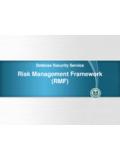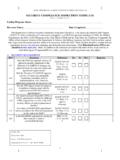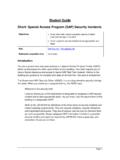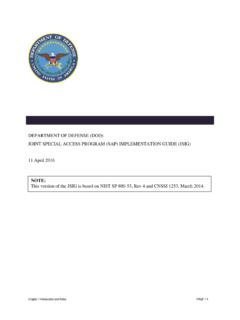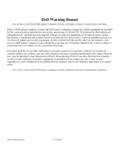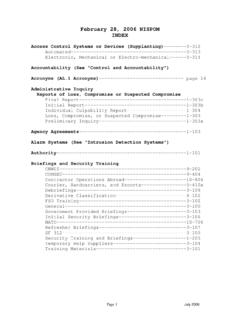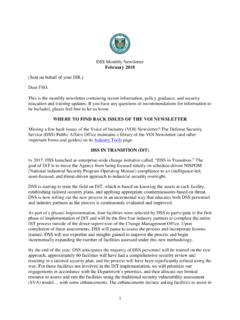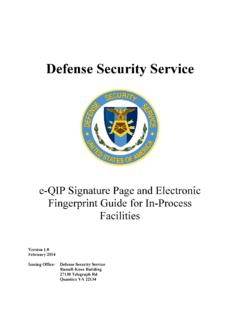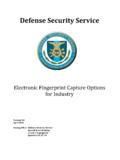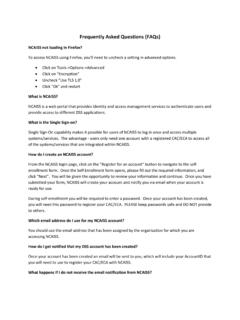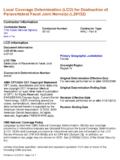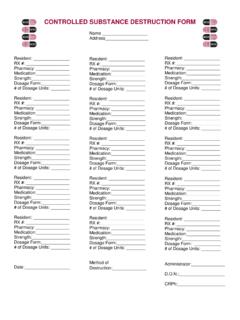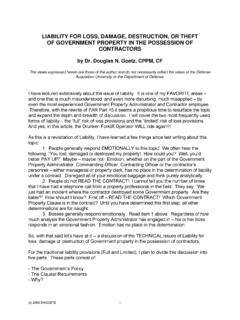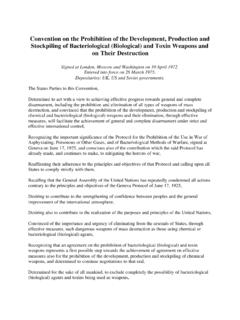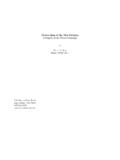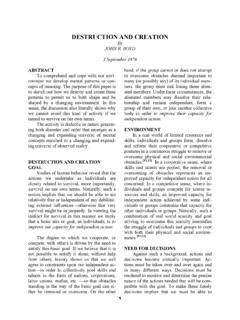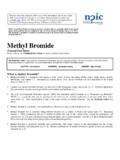Transcription of Student Guide Short: Disposal and Destruction of ...
1 Disposal and Destruction of classified information Page 1 Student Guide short : Disposal and Destruction of classified information Objective Identify the who, what, when, why, and how concerning Disposal and Destruction of classified information POC Estimated completion time 10 minutes Content Presentation 1. Your New Assignment [Speaker 1: Gary Jenkins, Supervisor] Thanks for stopping by. I really appreciate your offer to head up this year s classified clean-out day. classified clean-out day is a requirement now, not just a recommendation. It s required by DoD Manual This will be your handbook for destroying classified information .
2 It even gives some technical guidance on Destruction methods. I m writing up some guidelines for our office to follow so we get things right. Kind of a who, what, when, why, and how of disposing of the classified material we don t need any more. The why is easy: Aside from complying with regulatory guidance, destroying unneeded classified information reduces the risk of compromise. After all, if it no longer exists, then nobody can get their hands on it. Regular Destruction can also help protect national security in the event of an emergency. What if we had an earthquake and had to evacuate this facility quickly?
3 What would happen if we had lots of unneeded classified material lying around? Destroying classified information also reduces the need for handling and control, which reduces our protection costs. And last, but definitely not least, destroying information we don t need makes more room for information we do. When do we destroy classified information ? Student Guide Disposal and Destruction of classified information Page 2 Well, we can actually destroy it as soon as we don t need it any more. That s not always practical, though. But the DoDM requires us to do it at least once a year.
4 Which for us this year is next week! As far as who is authorized to destroy classified information , there s no one answer. But remember, the same people who can create it are also authorized to destroy it. Authorized custodians or users of the information can destroy it. Sometimes specific individuals, like you, are designated to destroy it. Specified control officers such as a North Atlantic Treaty Organization (NATO), Communications Security (COMSEC), or Top Secret Control Officer can destroy it. And sometimes materials need to be sent to the National Security Agency s Central Security Service for Destruction .
5 As far as exactly what types of materials we re going to destroy next week and how, I m sending you to the experts. You ll want to talk to Phil Martinez, our office manager. He was in charge of our Disposal and Destruction operations last year. He ll be able to give you a lot of help with destroying the paper-based information around here. For the IT-type materials, you ll need to talk to Jackie Chen. She ll set you right with disposing of electronic media. OK, go on and get started. I know they re both in today. Please stop back in when you re done so we can go over some procedures for next week.
6 Oh, and thanks again. 2. Paper-Based Material [Speaker 2: Phil Martinez, Office Manager] Hi, I m Phil. Thanks for tracking me down. I ve been very busy lately, so I really appreciate your taking over our classified clean-out day. Since I ve handled it before, Mr. Jenkins asked me to tell you what I know about destroying classified information in paper form. Types of paper-based materials Documents Maps Blueprints Files Plans Let s look at where you ll do most of the work next week. See the burn bag over in the corner? We use those all around the office to store unneeded classified information until we can destroy it.
7 The idea is to control the information to minimize the chance for unauthorized access. We use separate bags in Student Guide Disposal and Destruction of classified information Page 3 this office for paper versus non-paper information , like CDs. They should all be sealed and safeguarded as per the Manual until the contents can be destroyed. Part of your job next week will be to gather those up and arrange for Disposal or Destruction . There are several authorized Destruction methods for paper-based classified materials. Destruction Methods for Paper Materials Shredding Most common Destruction method for paper Best for small volumes Use NSA/CSS-approved equipment (see EPL for paper shredders) Stir bags of shredded material to mix up contents It s a good idea to shred unclassified information along with classified !
8 Burning/incineration Reduces paper materials to ash to prevent any possibility of reconstruction Incinerators must meet Environmental Protection Agency (EPA) standards for geographic location Wet pulping Used to destroy water-soluble paper materials Pulping devices must have security screen size of inch or smaller Done primarily at NSA Guidelines/best practices for collection: o Place only water-soluble paper in collection containers o Limit weight of bags to 10-15 pounds each Do not include boxes or metal, such as paper clips or staples Preferred over burning because if allows pulp to be recycled into new paper Chemical decomposition Used to destroy non-water-soluble materials Separates a chemical compound into smaller compounds Wetting additives are added for non-water-soluble paper This method is rarely used Pulverizing/disintegration/mutilation Used to destroy many different types of materials Also known as dry-grinding Employs knife mills and hammer mills to cut the materials Authorized high-security disintegrators are specified in current NSA/CSS
9 EPL I think that s about it. Give me a call if you have any questions, though. Go ahead and track Jackie down to get the rest of the story. Student Guide Disposal and Destruction of classified information Page 4 3. IT Equipment and Media [Speaker 3: Jackie Chen, IT Manager] Hi, I m Jackie. Mr. Jenkins told me you d be stopping by. I m in charge of our IT department, and I have also helped with Destruction of classified IT equipment and material in electronic form. There are actually quite a few different types of material you may need to destroy. Types of IT equipment and electronic media Magnetic tape Hard drives Floppy disks CDs/DVDs Storage devices, such as o Random-access memory (RAM) o Read-only memory (ROM) o Smart cards o Flash memory As you might imagine, it s not as simple as just sticking these types of materials in the shredder!
10 There are several authorized Destruction methods for classified IT and electronic materials. Destruction Methods for Electronic Media Overwriting Definition: o Destroying data by entering new data in its place Use: o Solid state devices (such as RAM, ROM, smart cards, flash memory) o Hard drives (to free up space only) Limitations: o Media must be reused only within the same environment o May not be used to declassify hard drives Degaussing Definition: o Erasing data from magnetic media Use: o Magnetic tapes o Hard drives o Floppy disks Limitations: Student Guide Disposal and Destruction of classified information Page 5 o Causes damage that prohibits continued use DoDM Requirements.
